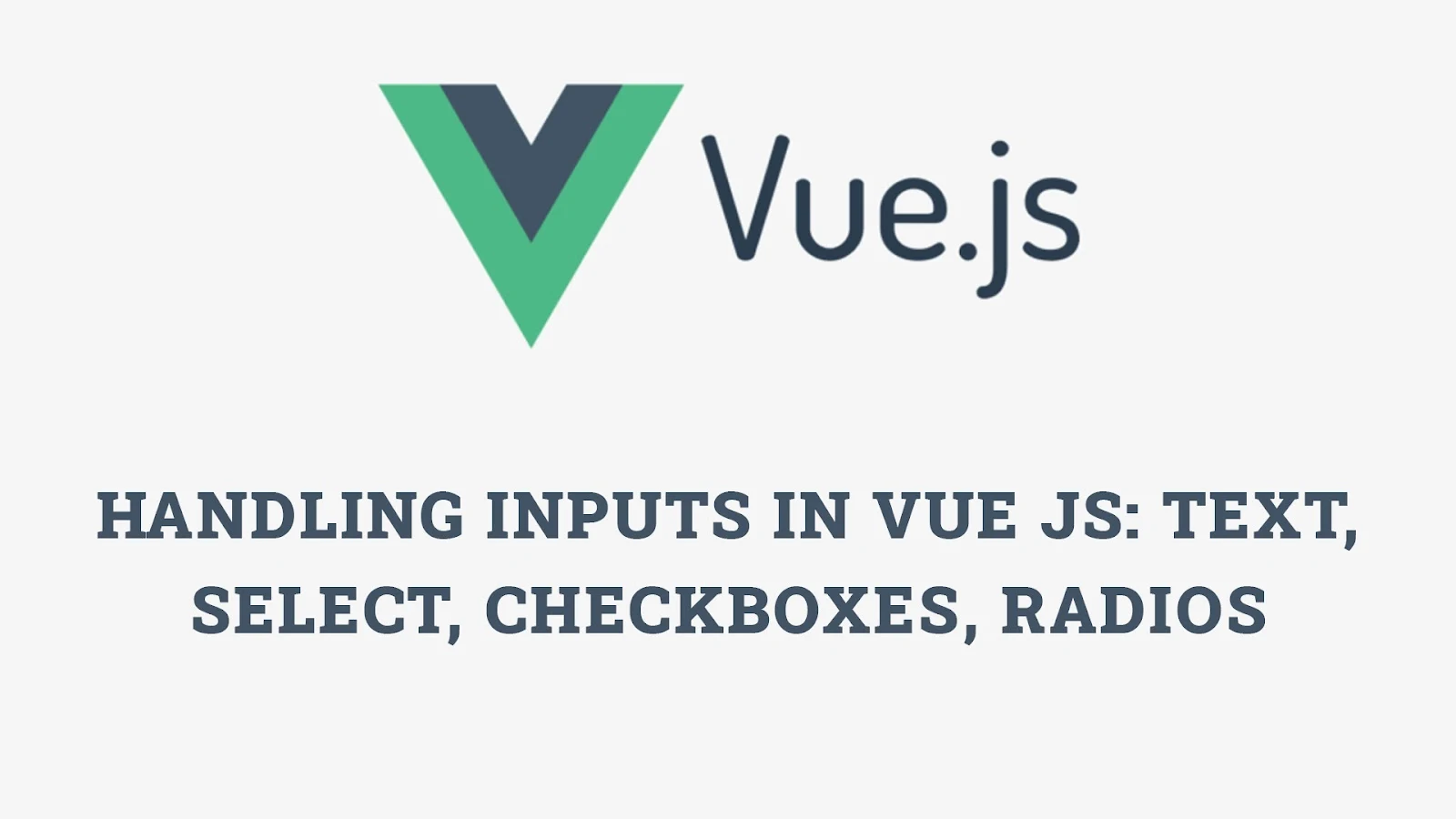Introduction
Handling user inputs is a fundamental aspect of web development. Vue.js provides a straightforward way to bind form inputs to your component's state using the v-model directive. This article explores how to handle various types of inputs in Vue.js, including text inputs, select dropdowns, checkboxes, and radio buttons, providing detailed explanations and examples.
Handling Text Inputs
Text inputs are one of the most common form elements. In Vue.js, you can bind the value of a text input to a component's data using the v-model directive.
Example: Binding a Text Input
<!-- Template section of a Vue component -->
<template>
<div>
<input v-model="textInput" placeholder="Enter some text">
<p>You entered: {{ textInput }}</p>
</div>
</template>
<script>
export default {
data() {
return {
textInput: ''
};
}
}
</script>
Explanation
In the example above, the v-model directive is used to bind the value of the input element to the textInput property in the component's data. As the user types into the input field, the textInput property is automatically updated, and the updated value is displayed in the paragraph element.
Handling Select Dropdowns
Select dropdowns allow users to choose from a predefined list of options. You can bind the selected value of a dropdown to a component's data using the v-model directive.
Example: Binding a Select Dropdown
<!-- Template section of a Vue component -->
<template>
<div>
<select v-model="selectedOption">
<option value="option1">Option 1</option>
<option value="option2">Option 2</option>
<option value="option3">Option 3</option>
</select>
<p>Selected Option: {{ selectedOption }}</p>
</div>
</template>
<script>
export default {
data() {
return {
selectedOption: 'option1'
};
}
}
</script>
Explanation
In the example above, the v-model directive is used to bind the selected value of the dropdown to the selectedOption property in the component's data. When the user selects an option, the selectedOption property is automatically updated, and the updated value is displayed in the paragraph element.
Handling Checkboxes
Checkboxes allow users to select multiple options from a list. You can bind the checked state of a checkbox to a component's data using the v-model directive.
Example: Binding a Checkbox
<!-- Template section of a Vue component -->
<template>
<div>
<label>
<input type="checkbox" v-model="isChecked"> Check me
</label>
<p>Checkbox is: {{ isChecked ? 'Checked' : 'Unchecked' }}</p>
</div>
</template>
<script>
export default {
data() {
return {
isChecked: false
};
}
}
</script>
Explanation
In the example above, the v-model directive is used to bind the checked state of the checkbox to the isChecked property in the component's data. When the user checks or unchecks the checkbox, the isChecked property is automatically updated, and the updated state is displayed in the paragraph element.
Handling Radio Buttons
Radio buttons allow users to select one option from a group. You can bind the selected value of a group of radio buttons to a component's data using the v-model directive.
Example: Binding Radio Buttons
<!-- Template section of a Vue component -->
<template>
<div>
<label>
<input type="radio" value="option1" v-model="selectedRadio"> Option 1
</label>
<label>
<input type="radio" value="option2" v-model="selectedRadio"> Option 2
</label>
<p>Selected Radio: {{ selectedRadio }}</p>
</div>
</template>
<script>
export default {
data() {
return {
selectedRadio: 'option1'
};
}
}
</script>
Explanation
In the example above, the v-model directive is used to bind the selected value of the radio buttons to the selectedRadio property in the component's data. When the user selects a radio button, the selectedRadio property is automatically updated, and the updated value is displayed in the paragraph element.
Fun Facts and Little-Known Insights
- Fun Fact: The
v-modeldirective is not limited to form elements; it can also be used to create custom two-way bindings for your own components. - Insight: By leveraging the power of
v-model, you can create highly interactive and user-friendly forms in your Vue.js applications. - Secret: You can extend the functionality of
v-modelby creating custom input components that handle complex data formats or validation rules.
Conclusion
Handling various types of inputs in Vue.js is made simple and efficient with the v-model directive. By understanding how to use v-model with text inputs, select dropdowns, checkboxes, and radio buttons, you can create dynamic and responsive forms in your applications. The active and supportive Vue.js community, combined with the framework's comprehensive documentation, ensures that you have all the resources you need to succeed in modern web development.
 Reviewed by Curious Explorer
on
Sunday, December 01, 2024
Rating:
Reviewed by Curious Explorer
on
Sunday, December 01, 2024
Rating:




No comments: